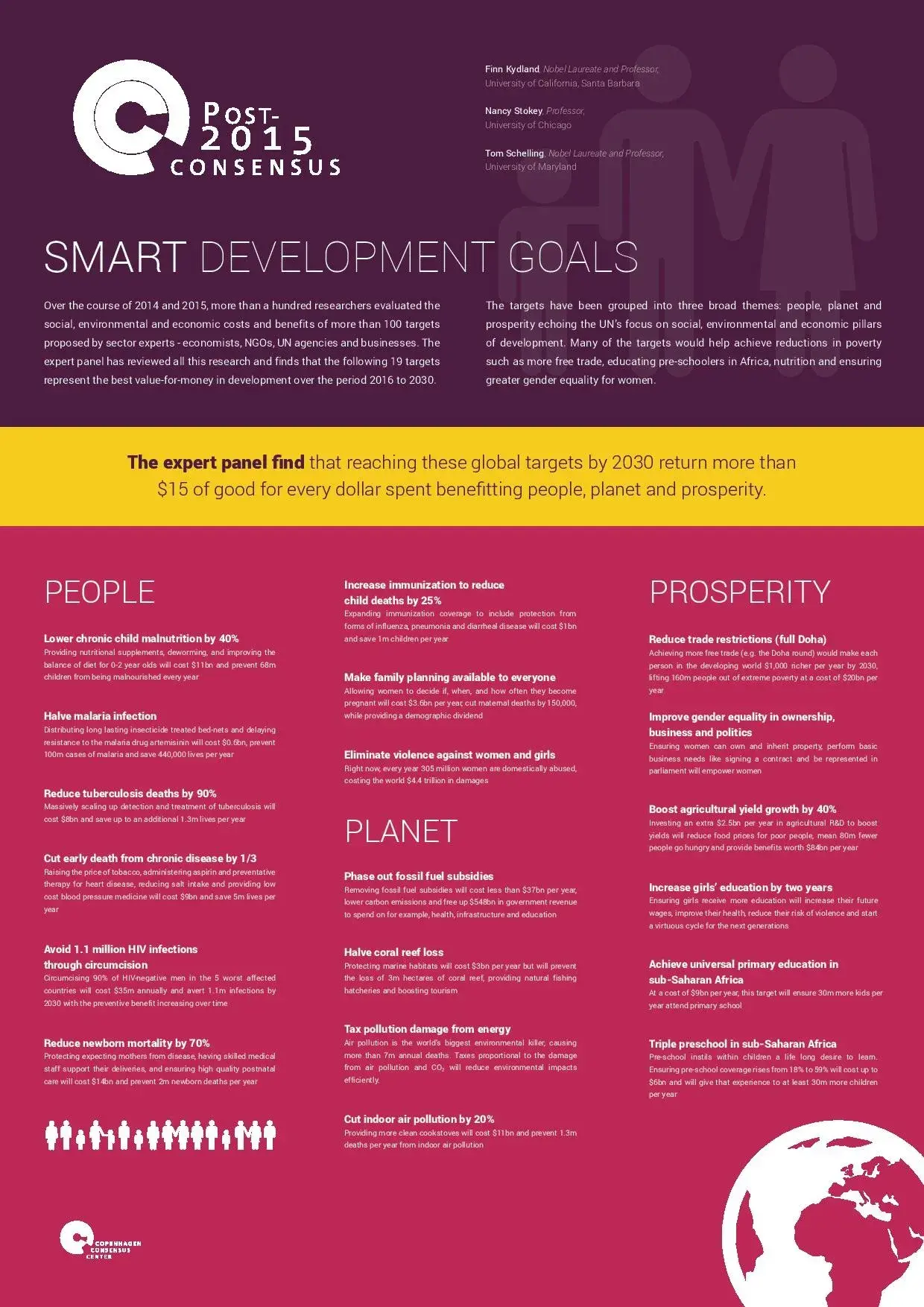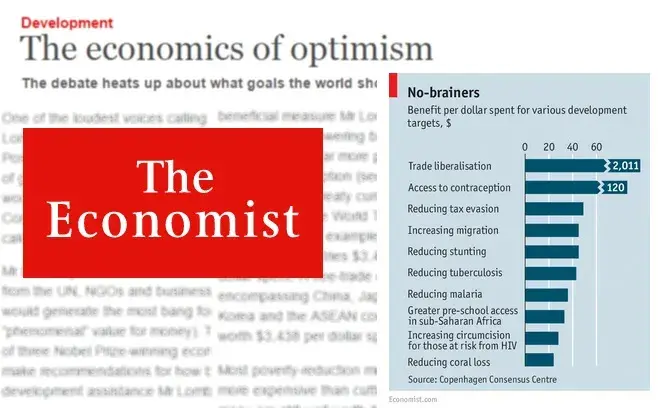Science and Technology: What's the smartest SDG target?

As reported in the Wall Street Journal and TIME.com, expand open international circulation of skilled workers by 5-20% of current skilled migrants, which will return 15 dollars for every dollar spent. Over the period, the benefits could reach almost half a trillion dollars.
The main report proposes a novel idea to promote technology transfer across nations: increased circulation of skilled labor within ‘innovation zones’. Countries that agree to be part of these zones would allow some skilled labor to freely move between them for up to 10 years.
If implemented in the Americas, a 5% increase in skilled migration would mean an extra 136,000 managerial and technical workers migrating. They would earn $15 billion more over the next 25 years. Moreover, as they would bring with them new ideas and concepts, they will increase productivity in the US and elsewhere by $1.5 billion. For every dollar spent, this target could do 10-20 dollars worth of good.
With the Americas making up one-third of the global economy, and 20% more visas, the potential benefits could go as high as $500 billion for the entire world. That should make the target of higher labor mobility a strong contender for the world’s next set of goals.
Another, but less cost-effective target would be for all countries to increase their research and development investments, making all workers more productive. The benefit is about $3 for each dollar spent.
You can read all the papers on science and technology here and download the one page PDF here.
The smartest targets for the post-2015 development agenda
What are the smartest targets for the post-2015 development agenda?
In a world of limited resources, we can’t do everything, but how should we prioritize? The Copenhagen Consensus Center provides information on which targets will do the most social good relative to their costs. The final decision on choosing goals will definitely rest on a number of factors, not just economics – but knowing the costs and benefits provides an important piece of information.
The Post-2015 Consensus brought together, renowned experts from the UN, NGO and private sectors with 60 teams of economists to produced 100+ research papers to establish the most effective targets for the post-2015 development agenda within 22 core issue areas: Air Pollution, Biodiversity, Climate Change, Conflict & Violence, Data for Development, Education, Energy, Food Security, Gender Equality, Governance & Institutions, Health: Chronic Diseases, Health: Health Systems, Health: Infant Mortality & Maternal Health, Health: Infectious Diseases, Infrastructure, Illicit Financial Flows, Nutrition, Population & Demography, Poverty, Science & Technology, Trade, and Water & Sanitation.
An Expert Panel including two Nobel Laureates has reviewed all of this research and identified 19 targets that represent the best value-for-money in development over the period 2016 to 2030.
Only have three minutes? Watch our introduction video to the Post-2015 Consensus project.

Making prioritization a factor in the post-2015 debate
An overview of Copenhagen Consensus' ground-breaking research which is shaping the thinking for the 193 governments about to prioritize the smartest development goals for 2016-2030. If you've just read the article in The Economist you might be interested in exploring more about our project, and the research we've undertaken so we have put together an online supplement with more in-depth information.


